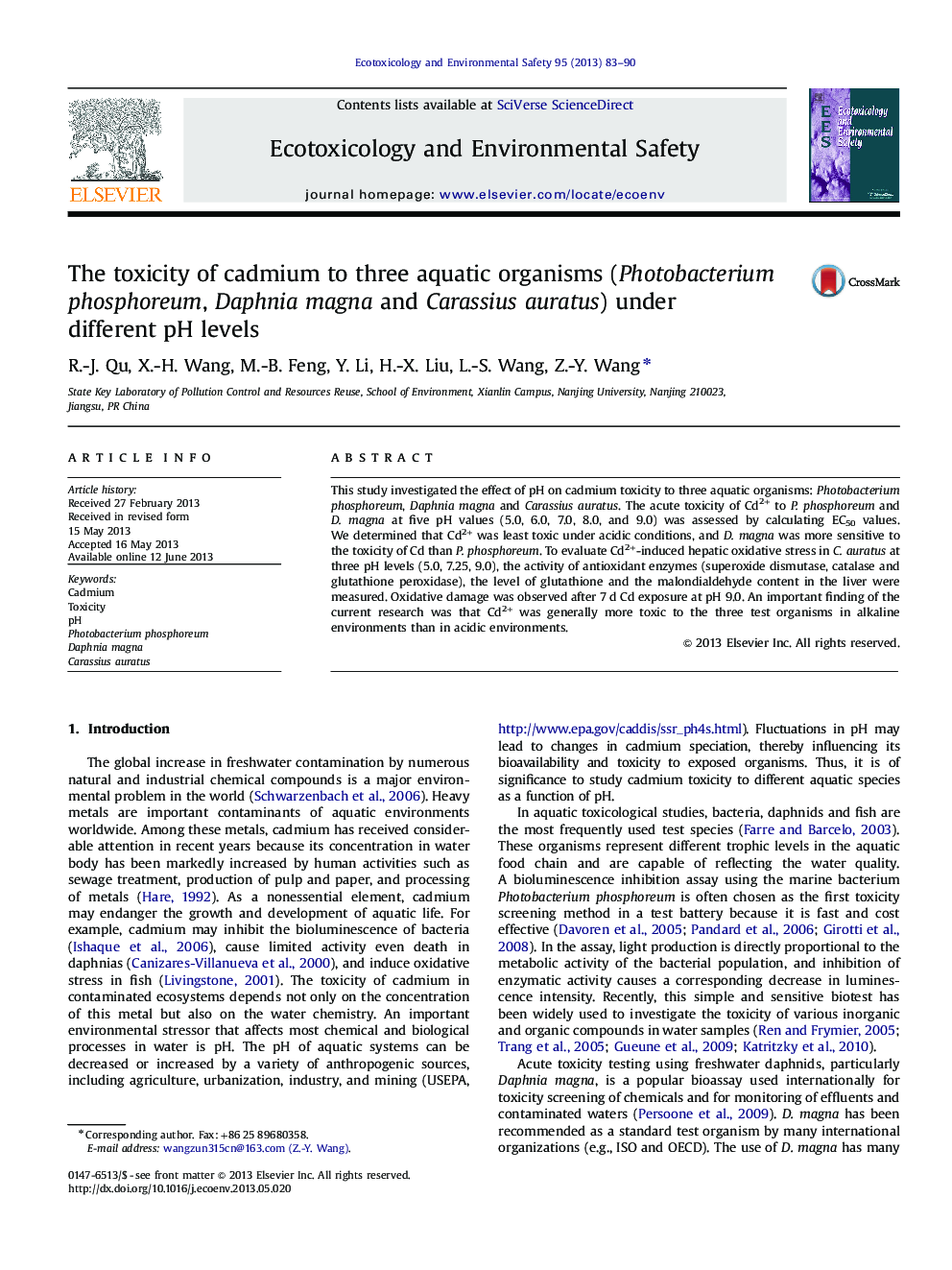| Article ID | Journal | Published Year | Pages | File Type |
|---|---|---|---|---|
| 4420344 | Ecotoxicology and Environmental Safety | 2013 | 8 Pages |
•The effect of pH on Cd toxicity to three aquatic organisms was investigated.•D. magna was more sensitive to the toxicity of Cd than P. phosphoreum.•Oxidative stress was induced in C. auratus in pH 9.0 water after 7 d exposure.•Cd2+ was more toxic to three test organisms in alkaline environments.
This study investigated the effect of pH on cadmium toxicity to three aquatic organisms: Photobacterium phosphoreum, Daphnia magna and Carassius auratus. The acute toxicity of Cd2+ to P. phosphoreum and D. magna at five pH values (5.0, 6.0, 7.0, 8.0, and 9.0) was assessed by calculating EC50 values. We determined that Cd2+ was least toxic under acidic conditions, and D. magna was more sensitive to the toxicity of Cd than P. phosphoreum. To evaluate Cd2+-induced hepatic oxidative stress in C. auratus at three pH levels (5.0, 7.25, 9.0), the activity of antioxidant enzymes (superoxide dismutase, catalase and glutathione peroxidase), the level of glutathione and the malondialdehyde content in the liver were measured. Oxidative damage was observed after 7 d Cd exposure at pH 9.0. An important finding of the current research was that Cd2+ was generally more toxic to the three test organisms in alkaline environments than in acidic environments.
